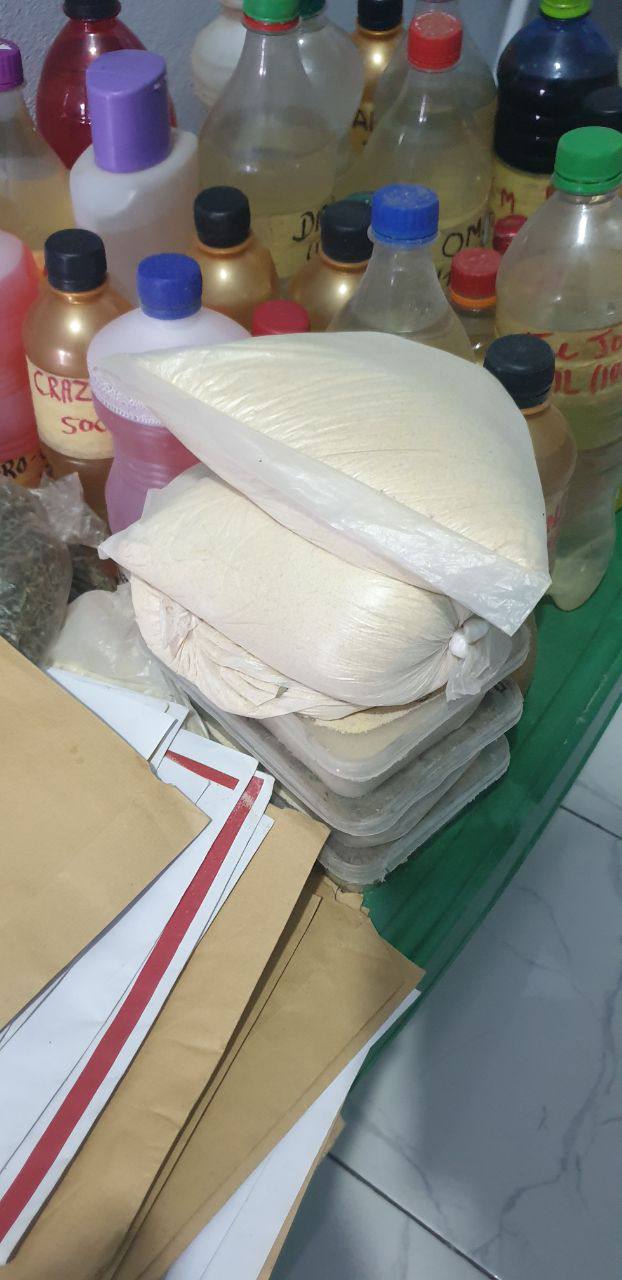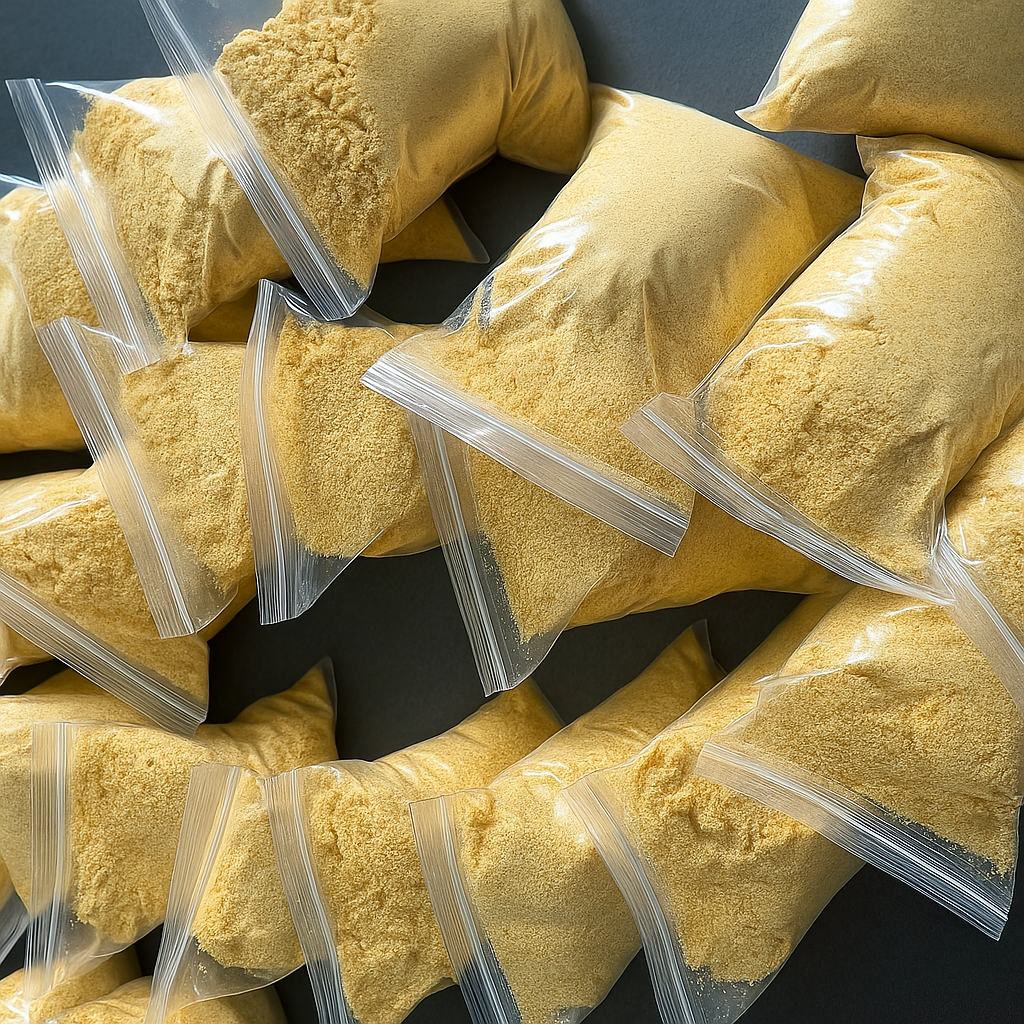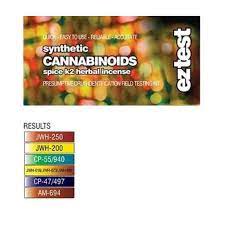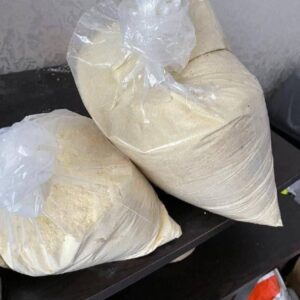4-CN-BINACA-ADB
Price range: $400.00 through $7,500.00
Description
4-CN-BINACA-ADB: Effects, Uses, Legality, and Safety Guide
Introduction
Among the growing family of synthetic cannabinoids, 4-CN-BINACA-ADB has gained significant attention in research communities and among collectors of novel compounds. This chemical, also known as 4-cyano CUMYL-BUTINACA, belongs to the indazole-3-carboxamide class and is often studied for its interaction with cannabinoid receptors. While some view it as a fascinating subject for chemical research, others raise concerns about its potential risks, potency, and legal restrictions. In this article, we’ll cover everything you need to know about 4-CN-BINACA-ADB, including its background, properties, effects, legality, and safety considerations.
What is 4-CN-BINACA-ADB?
4-CN-BINACA-ADB is a synthetic cannabinoid that mimics the action of natural cannabinoids found in the cannabis plant, such as THC. However, unlike natural cannabinoids, it is fully lab-created. It was first reported in the mid-2010s and rapidly spread through online marketplaces and research labs.
Chemically, it contains a cyano group attached to its structure, which significantly influences its binding affinity to cannabinoid receptors, making it more potent than many naturally occurring cannabinoids.
Effects of 4-CN-BINACA-ADB
The compound is known for its extremely high potency, which means very small amounts can produce strong effects. Reported effects include:
Euphoria and relaxation – similar to THC but often more intense.
Altered perception – changes in mood, thought, and sensory experience.
Sedation – deep relaxation and couch-lock effects.
Increased heart rate and stimulation – some users report energy before sedation sets in.
However, due to its high potency, the effects can also lead to negative reactions, such as:
Anxiety or paranoia
Nausea and dizziness
Cardiovascular strain
Overwhelming sedation
This unpredictability is one of the main reasons researchers caution against unsupervised use.
Why Researchers Study 4-CN-BINACA-ADB
Academic and scientific interest in 4-CN-BINACA-ADB comes from its ability to provide insight into:
Cannabinoid receptor activity – understanding how synthetic cannabinoids interact with CB1 and CB2 receptors.
Structure-activity relationships (SAR) – exploring how small molecular changes alter potency and effects.
Forensic toxicology – identifying the compound in biological samples for law enforcement and medical investigations.
Legality of 4-CN-BINACA-ADB
The legal status of 4-CN-BINACA-ADB varies worldwide. In many countries, synthetic cannabinoids are listed under controlled substances due to their psychoactive effects and potential health risks.
United States – Classified as a Schedule I substance, making it illegal for recreational use.
European Union – Many countries, including the UK, Germany, and France, ban synthetic cannabinoids under psychoactive substances legislation.
Asia – Countries like Japan and China have restrictions on indazole-based cannabinoids.
That said, some nations may not yet specifically list 4-CN-BINACA-ADB in their legislation, although general analogue laws often apply. Anyone considering working with this compound should carefully check local regulations.
Safety and Health Risks
Because of its high potency and lack of medical research, 4-CN-BINACA-ADB comes with serious safety risks.
Overdose potential – Tiny amounts can cause strong effects, making dosage control nearly impossible outside of a lab.
Unknown long-term risks – Unlike natural cannabis, synthetic cannabinoids have little history of human use, raising concerns about organ toxicity, brain effects, and dependency.
Impurity issues – Street products labeled as 4-CN-BINACA-ADB may be adulterated or mislabeled, further increasing risks.
Researchers emphasize that this compound should only be handled with proper safety equipment in controlled laboratory environments.
4-CN-BINACA-ADB vs. Natural Cannabinoids
When comparing synthetic cannabinoids like 4-CN-BINACA-ADB to natural cannabis:
Potency – Synthetic cannabinoids are often far more potent, increasing both effects and risks.
Safety – Cannabis has been studied extensively and is generally safer; synthetic variants remain unpredictable.
Legality – Many regions allow medical or recreational cannabis, but synthetic cannabinoids are usually banned.
This makes 4-CN-BINACA-ADB an unsuitable alternative for recreational users but a point of study for chemists and toxicologists.
Conclusion
It’s stands out as one of the more potent and controversial synthetic cannabinoids. While researchers find value in studying its effects on cannabinoid receptors and forensic detection, its unpredictable potency and potential health risks make it a compound that should only be approached in controlled lab settings.
For the general public, it’s important to recognize that 4-CN-BINACA-ADB is not a safe substitute for cannabis and may carry significant legal consequences if misused. Those interested in the field of synthetic cannabinoids should prioritize safety, legality, and scientific research over personal experimentation.
Additional information
| select weight | 10g, 25g, 50g, 100g, 250g, 500g, 1kg |
|---|





